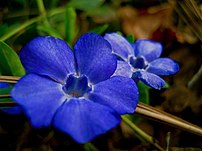[amazon_link asins=’B00791CX6W’ template=’ProductCarousel’ store=’finmeacur-20′ marketplace=’US’ link_id=’9b75d25d-f8c3-11e6-93f0-331d739638da’]
[amazon_link asins=’B0001TT3YE,B000VBRS4Y,B008WTHJKA,B01NAI6A9Z,B003Q5KRF4,B01M0J2V77′ template=’ProductCarousel’ store=’finmeacur-20′ marketplace=’US’ link_id=’d6703e2f-f8c3-11e6-a1eb-81b8fcdae6b1′]
[amazon_link asins=’0986204943,B002PF7J8Y,B0036L0HBM,B005NWHLT8,096643580X,0966435877,B005D2QWDE,B001R55RPK,B00165Y18U’ template=’ProductCarousel’ store=’finmeacur-20′ marketplace=’US’ link_id=’a84c3b9e-01c6-11e7-a5e3-5b7372f45bfe’]
Botanical Name:Holarrhena pubescence (Buch.-Ham.) Wall ex DC. (Apocynaceae)
Family : Apocynaceae
Syn : Holarrhena antidysenterica (L.) Wall., Echites pubescens Buch.-Ham.
English names: Bitter oleander, Conessi bark, Dysentery rosebay, Easter tree, Ivory tree, Tellichery bark.
Sanskrit names: Girimallika, Indrayava, Kalinga(ka), Kalingyava, Katuka, Katuja, Mahagandha, Mallikapushpa, Panduradruama, Pravrishya, Sangrahi, Shakrapadapa, Vatsika, Vrikshaka, Yavaphala.
Vernacular names: Asm : Dhurkhuri, Ducikhuri; Ben: Kurchi, Katuraj, Kuteswar, Indrajava; Guj : Dhowda, Kuda, Kari; Hin : Kurchi, Karchi, Karra; Kan : Beppale coodsaloo, Korchie; Lep : Fajeerip; Mal: Kodagapala; Mar: Kura, Kala-kura, Kear, Kewar, Kodago, Kuda, Dola-kuda, Pandhrakura;’Mun : Ludu-ba, Toa-ba; Nep : Khuria; Ori : Kherwa, Pita, Korwa, Patru kurwa; Orn : Koraia; Pun: Kawar, Kura, Kear, Kewar; Sad: Koraia; San: Hat; Tam: Kuda-sappalai, Veppalei, Kodagapalei, Indrabam; Tel: Kodisepala, Palakodsa, Pala, Kodaga.
Trade name: Kurchi.
Habitat : Major parts of India up to 1500 m in the Himalaya; Bangladesh, also in Africa-mostly in drier regions.Native to: tropical areas of Africa and Asia
Description:
Deciduous tree or large shrub; leaves sessile or subsessile, broadly ovate to elliptic-oblong, abruptly acuminate, often unequal, rounded or obtuse at base, lateral nerves 10-15 pairs, arching near the margin; flowers white(very sweet smell), bracts small, follicles 20-42 by 0.8-1.2 cm; seeds up to 1 cm long, linear-oblong, coma about twice as long as seeds, seeds brown.
.click to see the pictures…>…..(01)…...(1).…….(2).……..(3).…..(4)....(5)….
Flowering and Fruiting: May-January.
Ecology and cultivation: Common in village surroundings; sometimes in private gardens.
Chemical contents: Root-bark: holacetine; Stem-bark: L-quebrachitol, dihydroisoconessimine, kurcholessine, 3-a-aminoconan-5-ene, 7-a-OH-conessine, holonamine; Leaf: aminoglycosteroids, aminode-oxyglycosteroids, kurchiphylline, kurchiphyllamine, kurchaline, holadysine, holadysamine, holantosines A, B, C & D, holarosine A, B, E & F.
Medicinal Uses:
Traditional use: MANIPURI : Bark (boiled extract) : in diarrhoea, dysentery; GARO : Bark and Leaf: in dysentery; ETHNIC COMMUNITIES AROUND GUAHATI: Seed: as anthelmintic; BODO (of Assam) : Bark: in diarrhoea, dysentery, piles; Flower: as appetiser and in intestinal worms; Seed.. in leprosy; ASUR (of Bihar) : Bark: in snake bite; Seed: diarrhoea, fever, intestinal worms; MUNDA : Root and Leaf: in diarrhoea, bleeding from nose, haemorrhage after childbirth; SANTAL : Root: in bite of dog or jackal, blood and mucous in bowel excretion, diarrhoea, dysentery, hematuria, spermatorrhoea, spleen complaints; Bark.. in bronchitis, chameleon’s bite, cholera, cold, colic, fever, menorrhagia; Fruit: in anaemia, colic, constip5ltion, diarrhoea, dry cough, epilepsy, gravel, postnatal complaints, stomachache; TRIBAL SOCIETIES OF HAZARIBAGH AND RANCHI : Bark: in gastric disorder, to revive taste in tongue; ETHNIC COMMUNITIES OF ORISSA: Latex: in eczema and other skin diseases; ETHNIC COMMUNITIES OF ABUJH-MARH (Madhya Pradesh) : Bark: in menstrual complaints; TRIBAL COMMUNITIES OF SAGAR (Madhya Pradesh) : Seed: in dysentery; THARU (of Uttar Pradesh) : Bark: in fever; Bark and Seed (together) : in dysentery; KOL (of Uttar Pradesh) : Seed: in digestive complaints; ETHNIC COMMUNITIES OF DEHRA DUN AND SIWALIK: Seed: in diarrhoea, dysentery, fever; ETHNIC COMMUNITIES OF EAST RAJASTHAN: Bark and Seed (together) : in dysentery; ETHNIC COMMUNITIES OF MOUNT ABU: Bark: as antidote to snake bite; DANG: (of Gujarat ): Bark: in diarrhoea; VASAVA (of Gujarat ) : Root: in fever; Root and Bark (together) : in gout; ETHNIC COMMUNITIES OF SAURASHTRA: Bark: in bronchitis; ETHNIC COMMUNITIES OF DAHANU FOREST DIVISION (Maharashtra) : Bark and Leaf (together) : in dysentery; Latex: as antidote to snake bite, Seed: in asthma, colic.
ATHARVAVEDA : increases semen, tightens the slackened muscles; CHARAKA SAMHITA : Bark (paste) : good for skin diseases, leprosy, ringworm, piles, fistula, adenitis; Fruit: in vomiting, beneficial in disorders caused by vitiated phlegm and bile, as galactagogue; Seed: in piles; SUSHRUTA SAMHITA: Flower: beneficial in deranged phlegm and bile, and a good remedy for leprosy; CHAKRADATTA: Bark: in diarrhoea; BHAVAPRAKASHA: pungent, drying, refrigerant, excitant, cures piles, diarrhoea, phlegm, bile, leprosy, alleviates thirst; RAJANIGHANTU : pungent, bitter, thermogenic, astringent, cures diarrhoea, vitiated bile, skin diseases and piles; DHANVANTARINIGHANTU: pungent, bitter, astringent, drying, cooling, cures skin diseases, gastroenteritis, vitiated bile; MADANANIGHANTU : excitant, digestive, astringent, beneficial in bleeding tendency, worms, skin diseases; SALIGRAMNIGHANTU : appetising, beneficial in vitiated phlegm, cures diarrhoea, skin diseases, worms; KAIYADEVANIGHANTU : astringent, cooling, drying, excitant, pungent, beneficial in vitiated phlegm, bile, skin diseases, diarrhoea, piles; Flower: refrigerant, bitter, astringent, excitant.
AYURVEDA: Bark and Seed: acrid, anthelmintic, antiperiodic, aphrodisiac, astringent, bitter, carminative, expectorant, febrifuge, stimulating, beneficial in asthma, bronchitis! blood dysentery, diarrhoea, dropsy, dysentery, fever, haemorrhages, haemorrhoides, hepatopathy, malaria, piles, rheumatism, skin diseases, urinary troubles, verminosis, vomiting; Leaf: useful in boils, bronchitis, dysentery and wounds.
SIDDHA: Root and Bark: used as constituents for the preparation of Kutacap patai.
UNANI : in the preparation of Sufuf Habis and Majnum Bawasir.
Click to see:> Research Article By Pankaj Oudhia on Kurchi
Modern use: Bark (50% EtOH extract) : hypotensive; Bark-powder: in abdominal and glandular tumours; Fruit (50% EtOH extract) : anticancer, anti protozoa, hypoglycaemic, astringent, febrifuge, useful in diarrhoea, intestinal worms, and to regulate menstruation.
Remarks: Tribals of East Rajasthan give root to cattle in a disease in which tongue ejects out and gets swollen. Tribals of Maharashtra eat flower and seed as vegetables. Ethnic communities of Ratan Mahal Hills use latex to curdle milk. Santal women use flowers to decorate their hairdos. Tribals of Madhya Pradesh use wood to make combs and many household articles.
Disclaimer:
The information presented herein is intended for educational purposes only. Individual results may vary, and before using any supplements, it is always advisable to consult with your own health care provider
Resources:
http://www.bsienvis.org/medi.htm#Euphorbia%20tirucalli
http://www.biology-online.org/dictionary/Conessi









































